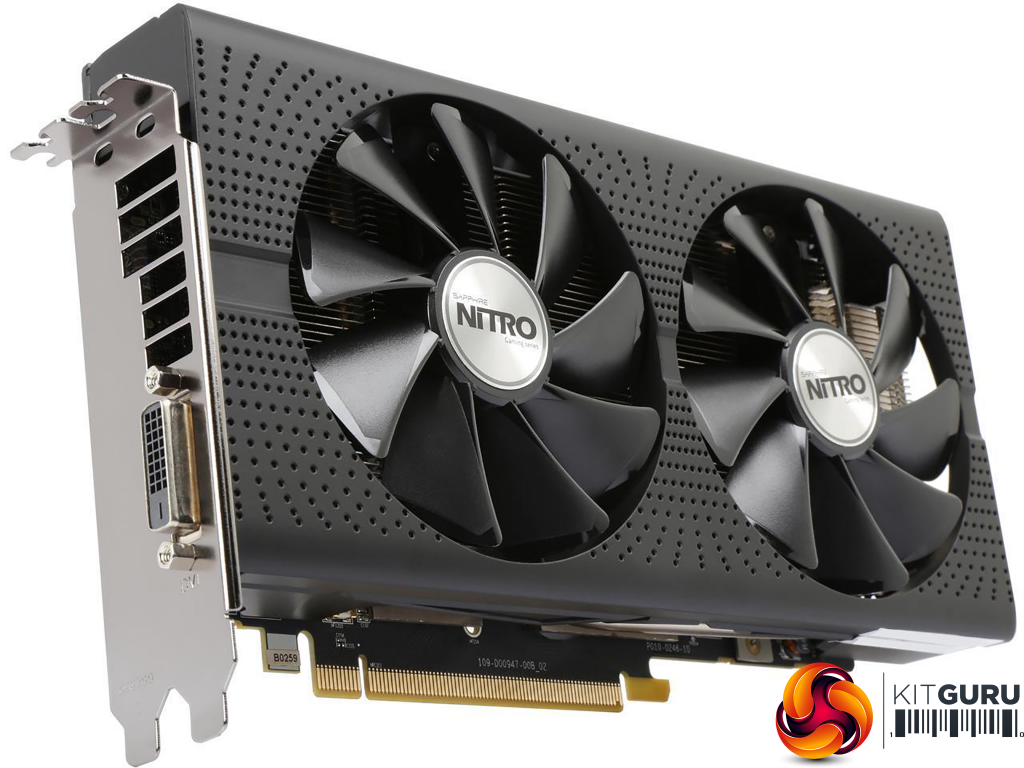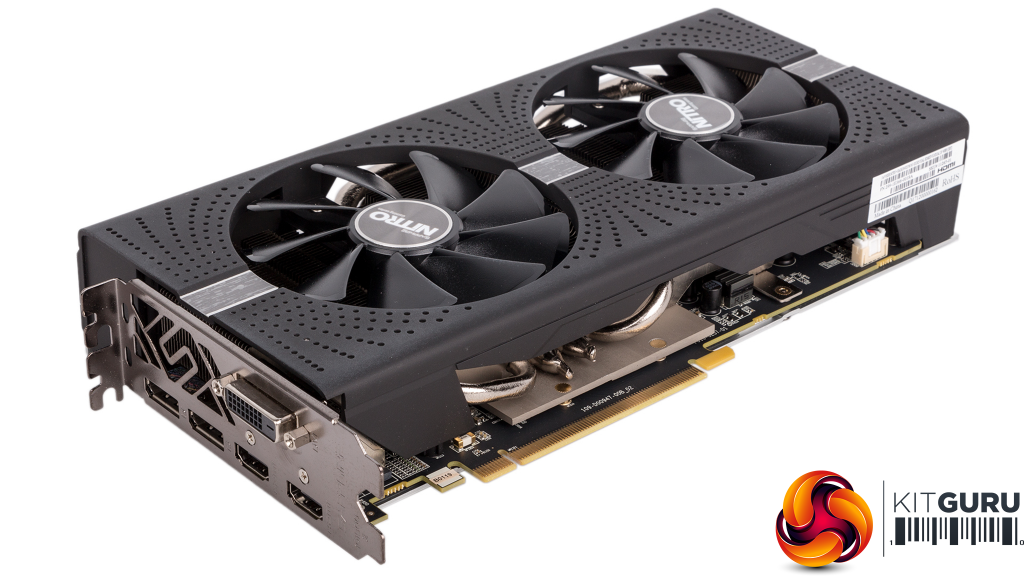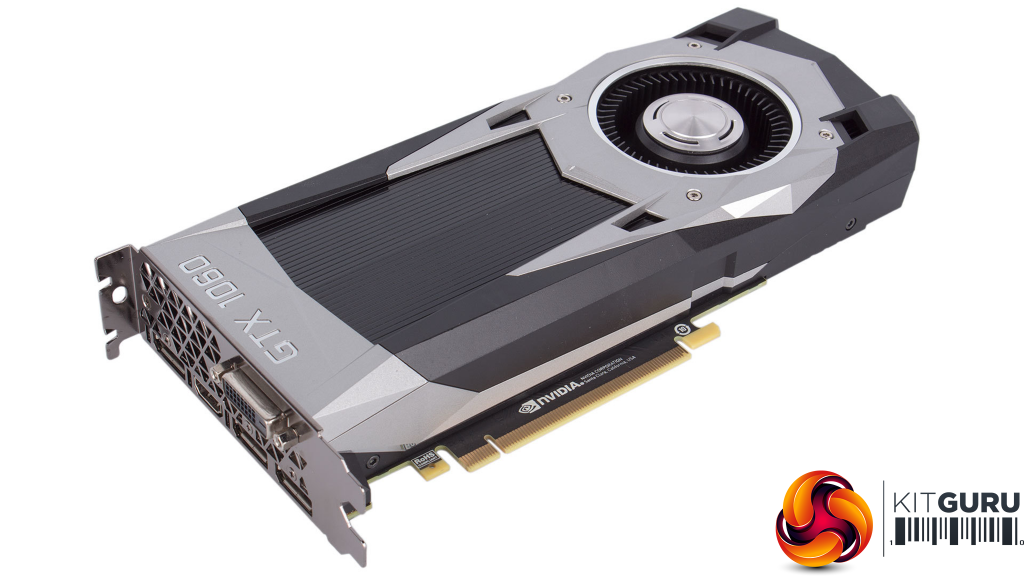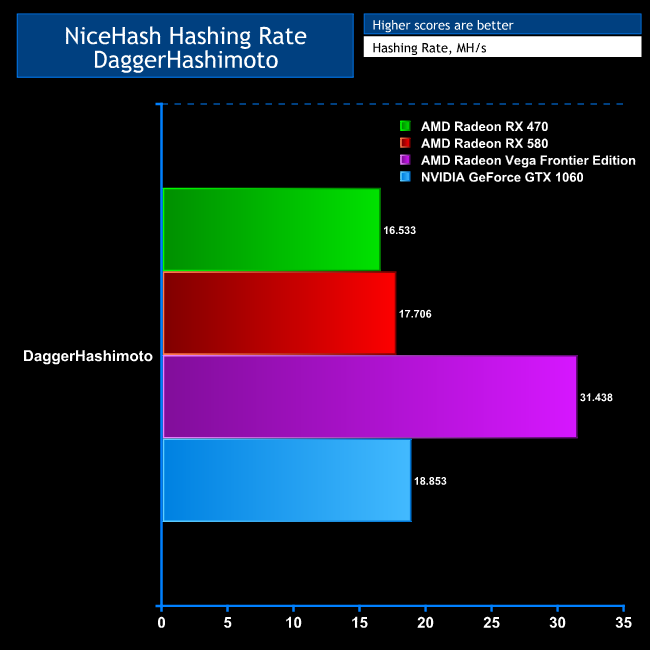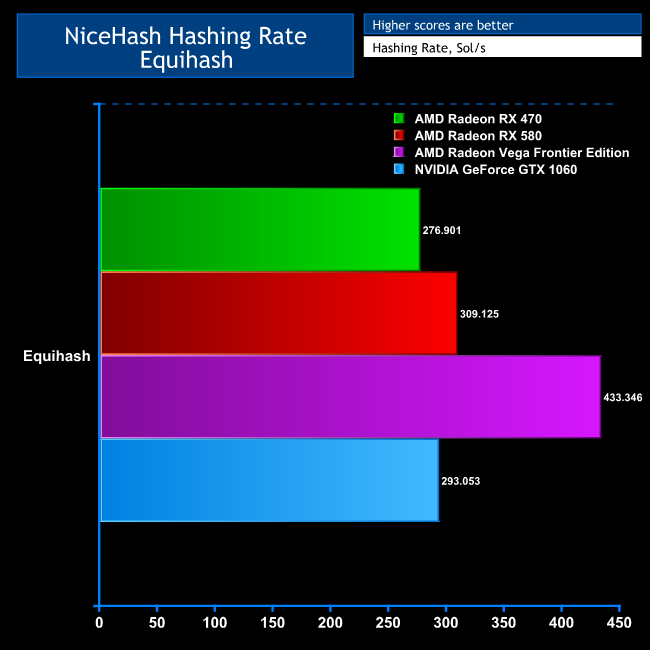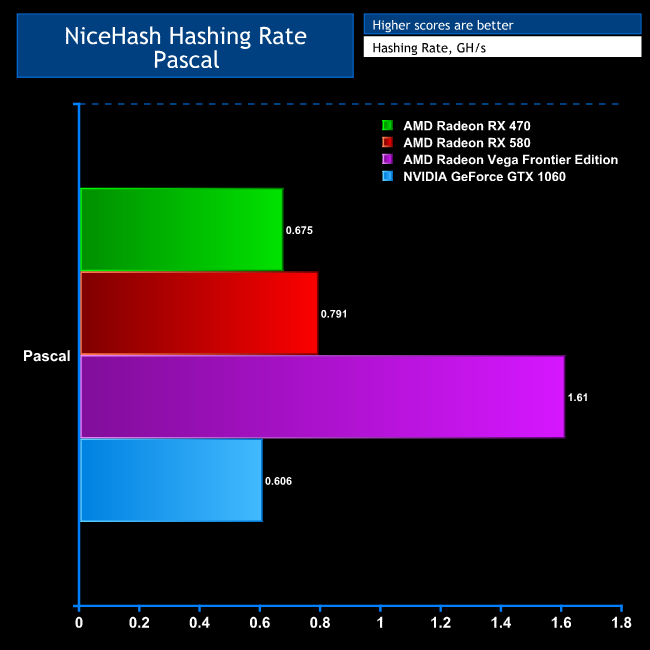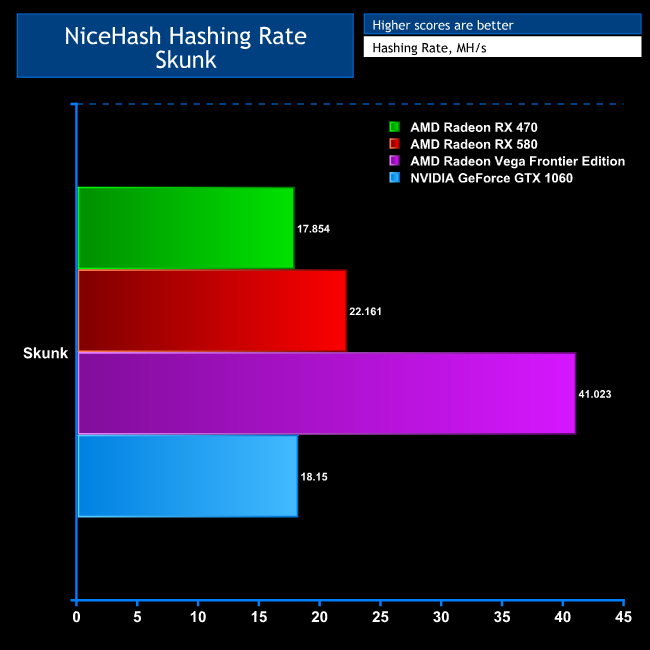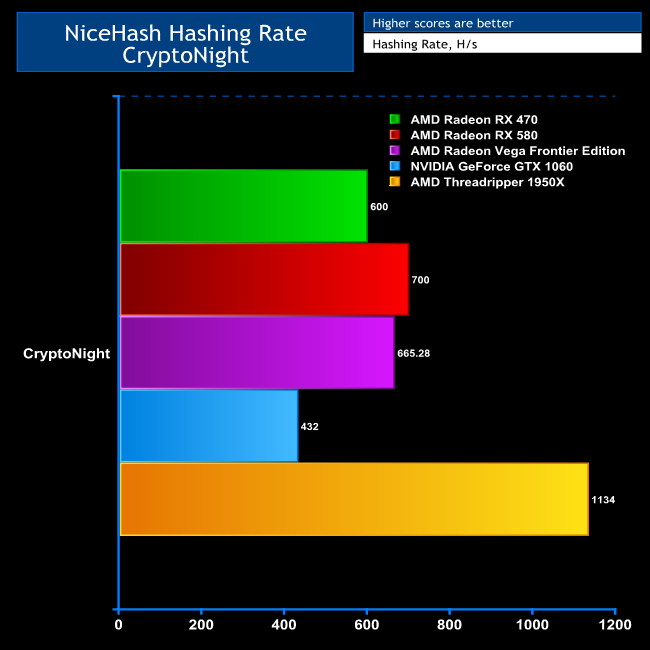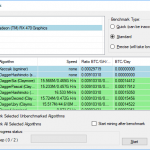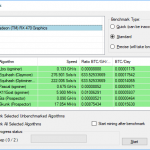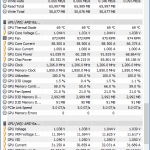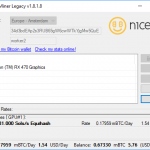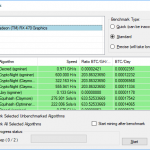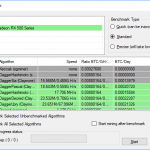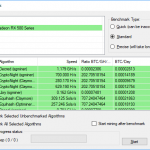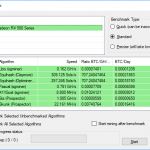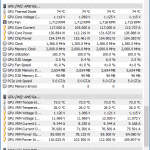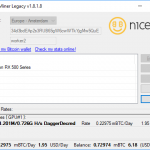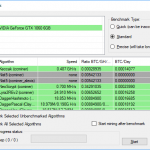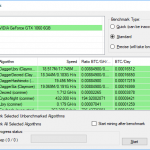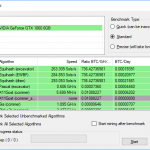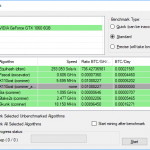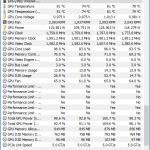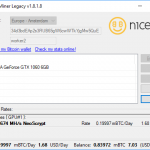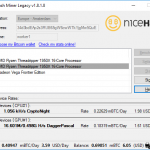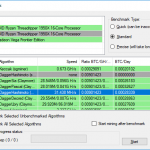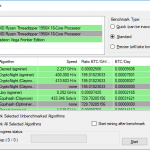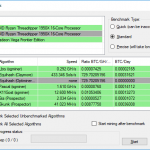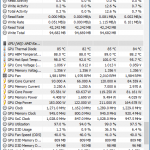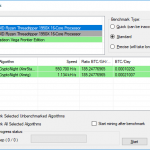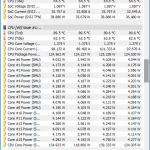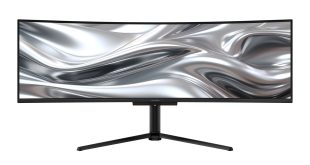AMD versus NVIDIA – Which is Best for Mining?
Choosing the right hardware for mining is more difficult than for gaming, and doesn’t follow the same criteria either. What is good for gaming – and even some other activities – might not be the best choice for mining. For a start, there’s a difference between hardware intended to get the best performance for a few hours a day of activity, and something you’re going to run continually, 24 hours a day and seven days a week.
If you’re using the hardware to make money, the initial cost and power consumption also need to be taken into consideration, which is why there has been such a run on mid-range hardware during this latest mining craze. This usually offers the best balance between purchase price, running costs and capability.
But even more confusing is that whilst a given GPU might be better at certain games than others, if it’s good at one game it will probably be pretty good at others, particularly those using the same underlying engine. With mining, this is partially true, but there are numerous core hashing technologies, such as Claymore, CGminer, CCminer, sgminer, or EWBF, and there are variants on these as well.
Each of these core technologies supports multiple algorithms, which in turn can be used with multiple coins. You will get subtly or even hugely different performance with different algorithms on a given piece of hardware, making absolute statements about one being faster than another hard to substantiate.
The underlying technologies are also aimed at different GPUs, because NVIDIA predominately uses CUDA for acceleration, and AMD uses OpenCL. CCminer is aimed at CUDA, but there’s a CUDA implementation of EWBF. Claymore supports AMD and NVIDIA GPUs, but CGminer is primarily aimed at ASICs and FPGAs. It used to support GPUs, but that was dropped in 2013. So the technologies and algorithms are competing as well as the hardware, making benchmarking extremely tough.
In order to give you a taste of what different hardware is capable of, we chose the algorithms that were considered most profitable during our NiceHash mining. We used the latter’s built-in benchmarking tool to tell us how our hardware selection was performing. We show the raw results below, but have included graphs for the six top algorithms as a sample of performance.
The GPUs on test include the Sapphire AMD Radeon RX 470 Mining Edition 8GB, Sapphire AMD Radeon RX 580 Pulse 8GB, and NVIDIA GeForce GTX 1060 Founders Edition 6GB, which reflect a selection of mid-range prices from £300 to £400. The NVIDIA GeForce GTX 1070 is also a popular mining card, but at over £500 would be an unfair match in this company.
Specifications
Sapphire AMD Radeon RX 470 Mining Edition 8GB
2,048 Stream Processors running at up to 1,236MHz
8GB of GDDR5 memory running at 1,850MHz
175W TDP
DVI connection only (also available with no graphics output)
£299.99, if you can find anyone selling it
Sapphire AMD Radeon RX 580 Pulse 8GB
2,304 Stream Processors running at up to 1,366MHz
8GB of GDDR5 memory running at 2,000MHz
235W TDP
2 x DisplayPort, 2 x HDMI, DL DVI-D
£389.99
NVIDIA GeForce GTX 1060 Founders Edition 6GB
1,280 CUDA cores running at up to 1,708MHz
6GB of GDDR5 memory running at 1,900MHz
120W TDP
2 x DisplayPort, 2 x HDMI, DL DVI-D
£349.99
We have also included results from the Armari Magnetar S16T-RW850G2 we were using for our long-term mining experiments. This system includes AMD Radeon Vega Frontier Edition graphics and AMD Ryzen Threadripper 1950X CPU, both of which are considered pretty handy for mining, although the price of these components puts them in a different league to the three main graphics cards on test, so we only include the results for reference, as this system will be the basis for our section on whether mining is profitable compared to the everyday electricity costs.
Since power consumption is as important as performance, after benchmarking each piece of hardware we left it mining on NiceHash for a short period and then used HDInfo64 to measure how much power it was consuming on average when mining at full pelt.
Here are our results.
DaggerHashimoto
The RX 580 is only seven per cent faster with DaggerHashimoto than the RX 470, and the GTX 1060 only six per cent faster than that. So the RX 470 is the best value in unit price versus performance terms, the GTX 1060 is second best, and the RX 580 third. However, the GTX 1060 is top in raw performance out of our three contenders.
DaggerDecred
With DaggerDecred, the RX 580 is 62 per cent faster than the RX 470, and the GTX 1060 is 17 per cent faster than the RX 470. So the RX 580 provides the best performance for the money, and isn't that far behind the Vega Frontier Edition in overall performance. The RX 470 and GTX 1060 are equal second, since the latter is 17 per cent more expensive and 17 per cent faster, so you get what you pay for.
Equihash
The RX 580 is 16 per cent faster than the RX 470, and the GTX 1060 is only six per cent faster. So the RX 470 is the best overall value again.
Pascal
The GTX 1060 is particularly poor with Pascal, coming in slowest of all. The RX 580 is only 17 per cent faster than the RX 470, so yet again the RX 470 is the best value.
Skunk
The RX 580 is 24 per cent faster than the RX 470, but it's 30 per cent more expensive. The GTX 1060 is only two per cent faster. Yet again, the RX 470 is the best value, with the RX 580 a close second, and GTX 1060 third.
CryptoNight
CryptoNight is an algorithm for mining CryptoNote coins like Dash and Monero. It’s unlike the other algorithms because it is aimed at CPUs rather than GPUs, although the latter can also run it. It’s very sensitive to memory speed, so the quantity of Level 3 cache available is key to how many threads you can run successfully at once, and thereby your hashing rate.
The AMD Threadripper 1950X and 1920X have 32MB of Level 3 cache, which allows up to 16 threads. However, Intel CPUs have significantly less Level 3, with even the Core i7 7980XE having 25MB, and the 7900X just 13MB, allowing them to run 12 and six threads respectively. Unfortunately, we didn’t have either of the latter available for comparison, but here is the AMD Ryzen Threadripper 1950X compared to our graphics card selection.
As you can see, the 1950X significantly outperforms the GPUs, and at the time of writing this performance equated to a couple of dollars in income a day, as much as a top-end graphics card with its best algorithms.
Power
If you needed any more evidence that the RX 470 is the best value mining card, its meagre power consumption should seal the deal. Consuming an average of 85W when at full pelt, it will cost 45 per cent less to run 24 hours a day mining than the RX 580. The GTX 1060, in comparison, will cost 39 per cent more than the RX 470, but 24 per cent less than the RX 580.
So, of our three mid-range cards, the GTX 1060 is likely to be second most profitable, and the RX 580 third, but the RX 470 is way out in front.
We have included the Vega Frontier Edition and Threadripper in this graph, because from a power consumption perspective they shape up well for mining, despite the initial cost. The Vega Frontier Edition consumes almost twice as much power as the RX 470, but it's also twice as fast with lots of algorithms. The Threadripper is also relatively cheap to run, considering its profitability.
Conclusion
Not surprisingly, the AMD Radeon Vega Frontier Edition rules the roost in performance terms, but this is a £1,200 graphics card aimed at professionals, and you’d get much more mining for your money with any of the consumer-grade options, since you could buy at least three for the same price, or even four RX 470s.
The Radeon RX 580 is still a great mining card, with great performance across a range of algorithms, but its power consumption is likely to make it less profitable in the long run than the RX 470. The GTX 1060 is somewhere in between, but you would still be better off with the RX 470.
It’s no surprise the Sapphire AMD Radeon RX 470 Mining Edition 8GB is currently so hard to buy. A rig with four of these could be making you a fiver a day, and costing less than £1.50 in power. So they would more than pay for themselves in a year, and possibly make a decent profit if cryptocurrency values go up again.
The AMD Threadripper’s abilities are also encouraging. This CPU is about twice the price of our GPU selection, but with AMD’s EPYC CPUs offering 64MB of Level 3, CPU mining is definitely going to be increasingly important. Considering that the CPU only draws 134W for around $2 of daily income, it’s definitely profitable to mine on your Threadripper when you’re not using it for something else. The CPU is only running at 50 per cent utilisation to achieve this, too, so isn’t likely to burn out either.
Of course, these profits assume no further charges, but this is far from the reality. So next next let’s turn to what happens to your mining income, how you can spend it on real goods, and whether it’s profitable in the long run.
 KitGuru KitGuru.net – Tech News | Hardware News | Hardware Reviews | IOS | Mobile | Gaming | Graphics Cards
KitGuru KitGuru.net – Tech News | Hardware News | Hardware Reviews | IOS | Mobile | Gaming | Graphics Cards


